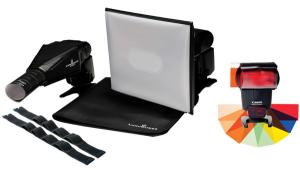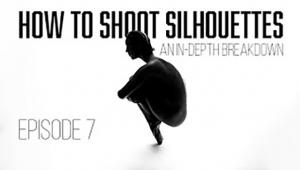10 Years Of Digital Innovations; A Second Spring When Every Leaf Is A Flower
"Most modern calendars mar the sweet simplicity of our lives by reminding
us that each day that passes is the anniversary of some perfectly uninteresting
event."--Oscar Wilde
I once had the pleasure of staying in the Cadogan Hotel in London where in 1895
Victorian society was rocked by the arrest of playwright Oscar Wilde. The incident
occurred in Room 118, just down the hall from my room, and was immortalized
in verse by the poet John Betjeman (www.johnbetjeman.com).
The photographic world has changed a lot since Peter Henry Emerson's work
in 1895 and digital imaging today is even different than it was back in August
1998 when I started writing this column. How? Let me count the ways...
 |
Photoshopping
As I was finishing my original 1998 column Adobe's Photoshop 5.0 was being
introduced with cool features such as a History palette, History Brush, and
Layer Effects. The day after Adobe launched Photoshop Elements 6 for the Mac
OS this year, they launched the beta version Photoshop Express (www.photoshop.com/express/landing.html),
a free online version of the program. You can read my take on the efficacy of
an online implementation of Photoshop in the April 2008 Web Profiles column.
Photoshop Express is an online, browser-based image-editing and management tool
that also lets users store up to 2GB of images online. Photoshop Express offers
a variety of sharing options, including showing photos and slide shows in an
online Gallery that's hosted by Adobe, à la what a Mac.com account
does for iPhoto users or what sites like SmugMug.com can do for the rest of
us. You can conveniently embed or link photos to social networking sites that
are all the rage with the kids these days or personal blogs. Photoshop Express
includes links allowing you to import photos from Facebook, Photobucket, and
Picasa. Is it Photoshop? Nope, but it's a good introduction for the digital
imaging newbie.
 |
Plugging Along In Soft Focus
onOne Software's (www.ononesoftware.com)
FocalPoint is a selective focus and vignetting plug-in for Photoshop and Photoshop
Elements designed to add a soft, defocused look to your photographs. This plug-in
lets depth of field control, plane of focus control, and selective focus be
applied to an image after it's photographed, allowing for more control
and precision. The plug-in's FocusBug has a distinctive hardware feel
much like adjusting a tilt-shift lens to choose a "sweet spot" of
focus either using a round aperture or a planar aperture shape. You then control
how much and what kind of blur you want; you can increase or decrease the amount
of feathering or blur across a plane. Blur choices include a standard defocused
look as well as a motion blur. FocalPoint can also be used for vignetting without
blurring the image and you can save favorite effects as presets; by using Photoshop
Actions you can also batch process an entire folder of images. At $159.95, FocalPoint
is not inexpensive, but I'm guessing portrait and wedding photographers
will pay for the investment after one wedding or photo session.
 |
Transferring Data From Old To New?
One thing that hasn't changed during the past 10 years is the hassle of
moving data files from an old computer to a new one. Here's a gizmo that
will make that job easier: Data Drive Thru's (www.thetornado.com)
The Tornado eliminates the tedium associated with transferring information from
your old Windows computer to your new one. Once connected to each computer,
a flashing LED light on top of the device lets you know you're connected.
The Tornado's software automatically displays the contents of each system,
enabling the user to drag-and-drop files and file folders from one machine to
the other. The Tornado is pocket-sized and has retractable cables for portability.
Operating at USB 2.0 speeds, The Tornado moves files 600 percent faster than
flash memory-based storage media. It's compatible with Windows 98 Se,
Me, 2000, XP, and Vista and costs less
than $60.
 |
Photoshopping Going Ape
When I wrote that first column I'd been shooting infrared film for sometime
but the concept of digital IR wasn't yet on my radar. Now I own two cameras
converted for infrared capture by Life Pixel (www.lifepixel.com).
One has their Standard conversion equivalent to Kodak's Wratten 89B and
the other has the Enhanced Color IR conversion that allows more color to pass
through to the sensor. I've been looking for the right bag to create a
grab-and-go IR kit and found it in Norazza's (www.norazza.com)
Ape Case PRO2000. It's designed to hold SLRs, video cameras, and a wide
variety of camera accessories. It features a padded 17" laptop-carrying
pouch with room for power cords, USB flash drives, and other accessories. The
PRO2000 has 16 compartments that can be reconfigured to hold my two SLR bodies,
lenses (including up to a 300mm mounted on a body), and flashes. Featuring the
signature "banana yellow" interior, the weather-resistant design
includes covered zippers and an attached pullover rain shield. Made of heavy-duty
nylon, the PRO2000 has a padded and contoured shoulder harness system and includes
a lifetime warranty.
 |

















































